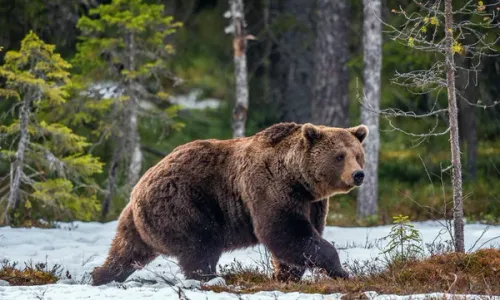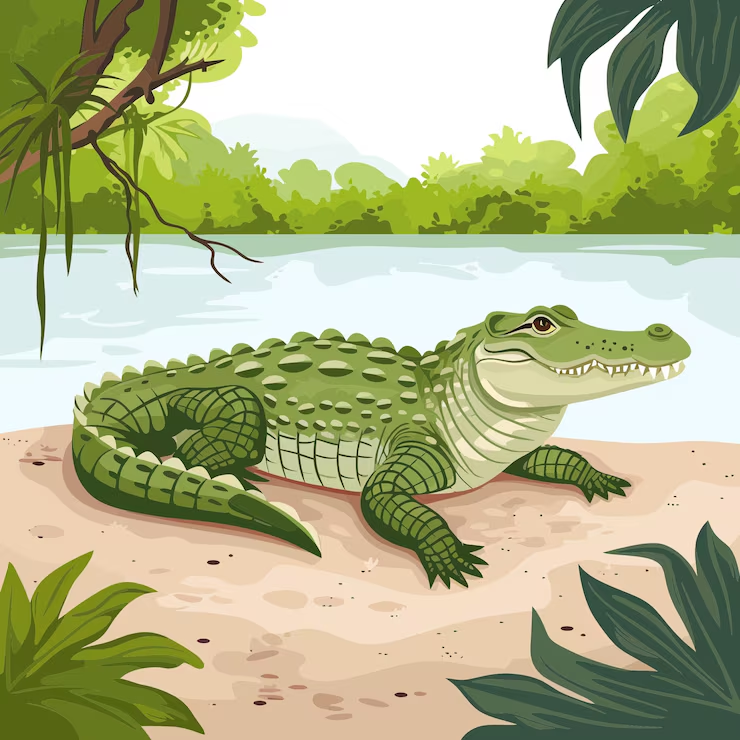Answers For History of bears
Answers and detail explain for History of bears
Explain
History of bears

Interviewer: Alison Sharp has spent much of her life researching bears and in particular bears in danger of extinction. She is the author of a recent book on bears and we welcome her to the studio today.
Alison: Thank you. Delighted to be here.
Interviewer: First of all, can you give us a quick overview of the history of the bear family?
Alison: Well, 1the bears we know today actually have as their ancestors bears which have been evolving for some 40 million years. We have fossils of the earliest 'true bear' --- and it's important to emphasise this because some creatures are called bears but are not.
Interviewer: Such as koalas for instance.
Alison: Yes --- exactly. Fossils of the true bear show a small dog-size animal with characteristics that show a blending of dog and bear traits.
Interviewer: 2So the general belief is that dogs and bears were of the same family?
Alison: 2Yes, that's the theory. And then we see the arrival of the early Cave Bear. We know from cave drawings that Neanderthal man used to worship this bear and at the same time fear it.
Interviewer: Understandable perhaps.
Alison: Yes, but 3they need not have worried because the Cave Bear only ate plants. In fact the Cave Bear survived two Ice Ages but then became extinct.
Interviewer: So how many bears can we find today and are any of them in danger of extinction?
Alison: Well I'll answer your first question first. There are eight species of bear in all; among them the American Black Bear and the Brown Bear --- from which evolved the newest species of bear -- the Polar Bear.
Interviewer: So 4how old is the Polar Bear?
Alison: Oh, 4he's a relative newcomer -- just 20,000 years old.
Interviewer: And could you tell us a little about them? Which is the largest bear, for instance?
Alison: Well, the largest bear existing today is either the Polar Bear or the Brown Bear.
Interviewer: Right! Don't we know?
Alison: Well, it depends which criteria you use. The Polar Bear is the heaviest; the male weighs up to 1,500 pounds but his narrow body actually makes him look smaller than the much more robust Brown Bear.
Interviewer: 5So the Brown Bear appears the biggest.
Alison: 5Yes.
Interviewer: And the smallest?
Alison: Well, 6the Sun Bear is the smallest of the eight species. They only weigh between 60 and 145 pounds.
Interviewer: That makes him a comparative junior!
Alison: Yes. And then next we have the so-called Giant Panda, but that's a small bear too, comparatively speaking.
Interviewer: And are all bears meat eaters?
Alison: No, not at all. In fact 7the Giant Panda is almost entirely herbivorous living on a diet of 30 types of bamboo.
Interviewer: Oh, yes of course. Panda's are famous for that.
Alison: And another interesting bear is the 8Sloth Bear which eats insects, particularly termites. He can turn his mouth into a tube and suck the insects out of their nests.
Interviewer: So going back to my second question... are bears really in danger of extinction?
Alison: Yes indeed, they are --- the Sun Bear in particular as they've been hunted almost out of existence. And the habitat of the Panda is also being reduced on a daily basis.
Interviewer: Can anything be done to reduce the threat to these endangered species? I know for instance that it's very hard to breed bears in captivity.
Alison: Yes, well, I think that by raising people's awareness generally 9we can reduce conflict between humans and animals, to stop the slaughter in parts of the world where bears are still hunted --- supposedly in self-defense or to protect livestock, but often quite unnecessarily. And we can also encourage governments to preserve the natural environment of the bear rather than allow the areas where they live to be systematically destroyed in the name of progress.
Interviewer: Yes, of course.
Alison: And in addition to these global efforts, 10all profits from the sale of my book will go towards the United Nations Bear Protection program.
Complete the sentences below Write NO MORE THAN THREE WORDS AND/OR A NUMBER for each answer.
According to Alison Sharp, bear ancestors date back 1 (40 million)
years
Scientists think bears were originally in the same family as 2 (dogs | the dog)
The Cave Bear was not dangerous because it 3 (only ate plants)
Question 4 - 8:
Choose the correct bear species in each question.
| A Brown Bear B Giant Panda C Polar Bear D Sloth Bear E Sun Bear |
Choose the correct bear species in each question.
Correct answer: C
Correct answer: A
Correct answer: E
Correct answer: B
Correct answer: D
Pick TWO letters A-F. Which TWO actions to help bears survive are mentioned?
A.
B.
C.
D.
E.
F.
![[Forecast Q2-2025] - Biology lecture](https://static.helik.app/reading/8fd3d7d2-ccf9-47a3-8920-2e7a3b0d6607)
![[Forecast Q2-2025] - Living in the City](https://static.helik.app/reading/1a60bcf3-f3a7-4e9b-97a2-94d156a0de3b)
![[Forecast Q2-2025] - Student Union](https://static.helik.app/reading/fb443123-8c1d-447e-8c79-5a01650f4754)
![[Forecast Q2-2025] - Fruit-picking Job in an Orchard](https://static.helik.app/reading/e1968346-6c55-44ae-b8d3-f6a4fb7207b9)
![[Forecast Q2-2025] - University Crime Prevention](https://static.helik.app/reading/bdda593e-16d6-4c72-8a12-b116e917b27c)
![[Forecast Q2-2025] - Business Course](https://static.helik.app/reading/3308e282-99a6-4bcb-9d22-0b488701d968)
![[C20T1] - Choosing a restaurant](https://static.helik.app/reading/e9b21123-c43c-42fb-88b7-5d0be3a37e03)
